Chapter 7: Memory
Memory Management Requirements
•Relocation
-
一开始不知道程序会在main memory的哪个区域
-
Active process需要能从main memory换入换出
-
a process must be placed in the same memory region when it is swapped back in would be limiting
所以我们要把进程 relocate
•Protection
-
Processes need to acquire permission to reference memory locations for reading or writing
-
必须在运行时检查进程产生的内存访问,以确保它们只访问分配给该进程的内存空间
-
Mechanisms that support relocation also support protection
•Sharing
允许多个进程访问内存的同一部分(保护机制具有灵活性)
•Logical organization
- Memory is organized as linear
- Segmentation(分段)来满足需求
- modules can be given different permissions
•Physical organization
-
main and secondary memory
-
overlaying(覆盖) 来组织数据和程序
-
unknow
Sharing Memory Partitioning(fixed)
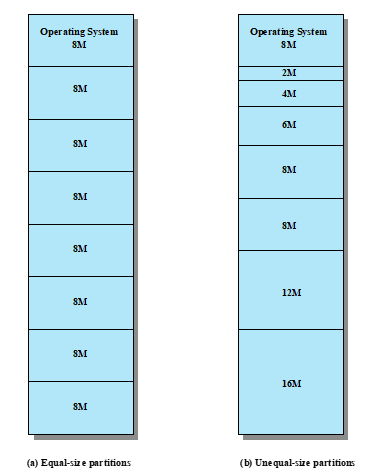
Disadvantages
•A program may be too big to fit in a partition
•Main memory utilization is inefficient
- internal fragmentation: wasted space due to the block of data loaded being smaller than the partition
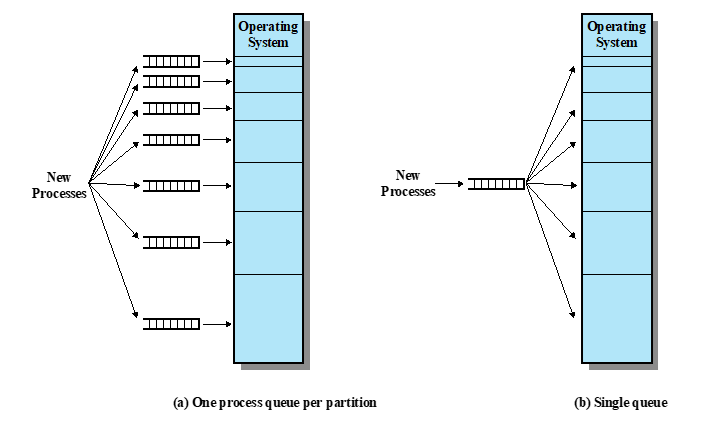
Disadvantages
•The number of partitions limits the number of active processes
•Small jobs will not utilize partition space efficiently
•Large partitions may be able to handle multiple small jobs
Dynamic Partitioning
•Partitions are of variable length and number

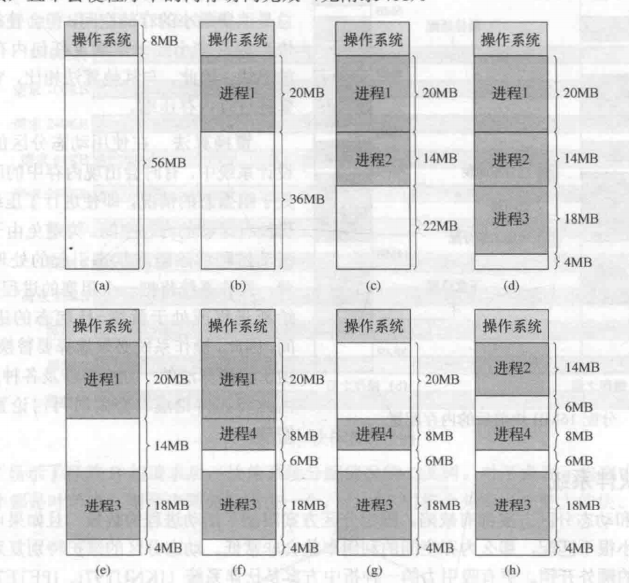
As time goes on, memory becomes more and more fragmented, and memory utilization declines. This phenomenon is referred to as external fragmentation
One technique for overcoming external fragmentation is **compaction 😗*操作系统不时地移动进程,使得进程占用的空间连续,使所有的空闲空间连成一片
Placement Algorithms
-
Best fit: 大小最接近的
-
First fit: the first available block that is large enough
-
Next fit: the next available block that is large enough
Buddy System
Memory blocks are available of size 2K words, L ≤ K ≤ U, where
2L= smallest size block that is allocated
2U = largest size block that is allocated; generally 2U is the size of the entire memory available for allocation
Address

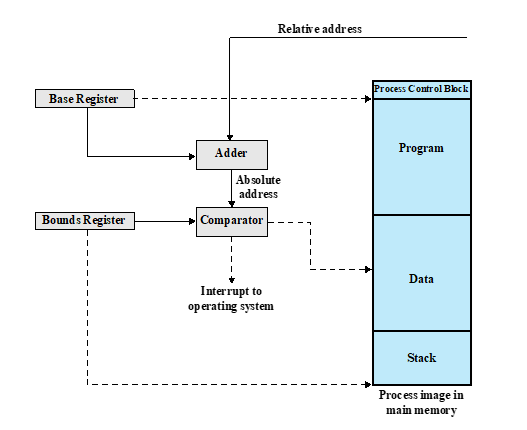
Paging
Process is divided into small fixed-size chunks of the same size

Page table
- for each process
- Contains the frame location for each page in the process
- Used by processor to produce a physical address
一个程序最多由$2^6=64$页组成,每页为1kb
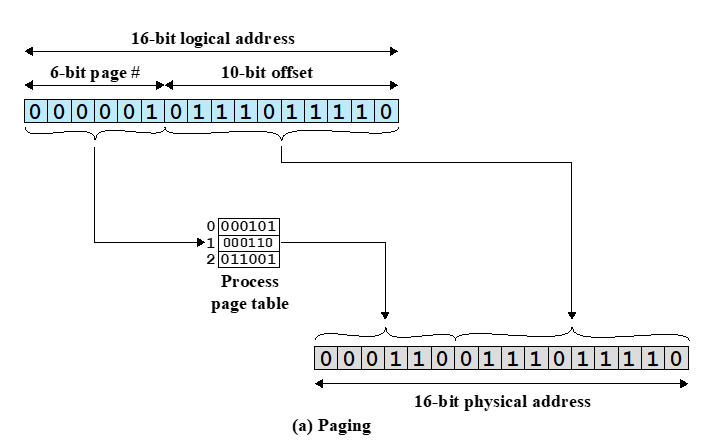
Segmentation
•A program can be subdivided into segments
-
may vary in length
-
there is a maximum length
•Addressing consists of two parts:
-
segment number
-
an offset
•Similar to dynamic partitioning
•Eliminates internal fragmentation, 但会产生外部碎片(进程被分为多个小块,外部碎片也会很小)
分段方案中,一个程序可以占据多个分区,并且这些分区不要求是连续的。
•Usually visible (Typically the programmer will assign programs and data to different segments)
–the principal inconvenience of this service is that the programmer must be aware of the maximum segment size limitation


